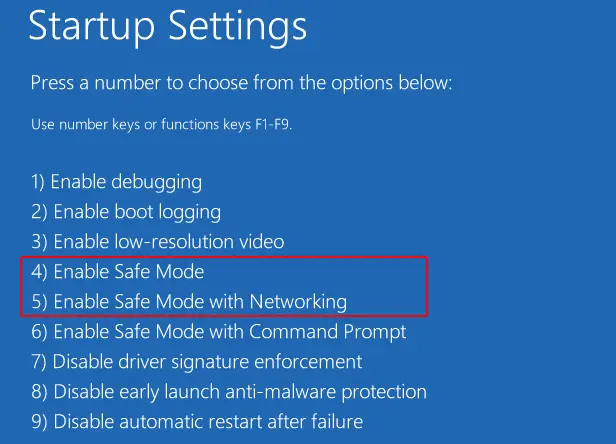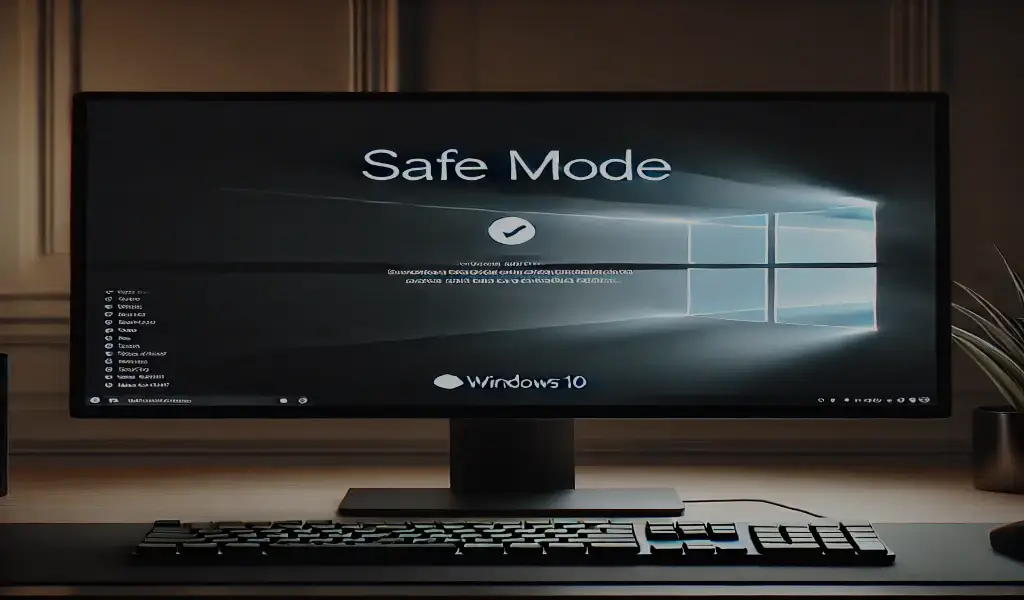There are instances where technology, despite its brilliance, has us in search of answers. That’s when the sleek user interface of the Windows 10 operating system falters. When a program that seems to be harmless begins to cause trouble, or an unanticipated error is spotted on the screen, these instances call for a moment of reflection and pause. What’s the issue? How do I correct this?
You can enter the Safe Mode mode–a reduced version of Windows that is the answer to unlocking mysteries in your computer. Much like an ancient trail through the woods, Safe Mode clears away obstructions and provides an easy way to discover solutions to problems.
This article will explain the complexities the intricacies Windows 10 Safe Mode, giving detailed guidelines about how you can access it, how to utilize it, and the ways it will help you restore peace and balance with your electronic world.
What Is Windows 10 Safe Mode?
Imagine Windows with no frills, like the minimalist home you have for your PC. Safe Mode is a mode of operation that uses just a few drivers and merely essential features that are running. Wallpapers that are vibrant disappear. other programs that are not critical are shut down and your system appears naked, which provides clarity when solving problems.
Secure Mode isn’t a brand new idea. It’s been an integral component of Windows for a long time, serving in the role of a shield as well as a reference when systems encounter difficulties. Its goal is easy but fundamental: to build an environment that is stable and where problems can be identified and fixed.
Windows 10 offers two forms of this modem state:
- Normal Secure Mode It runs only the essential drivers and applications.
- Secure Mode that includes Networking The program adds network drivers to allow Internet access.
Each one has its own function, so knowing which option to choose can help you troubleshoot efficiently.
When Should Safe Mode Be Used?
Safe Mode serves as a reliable ally in times of fail. The presence of Safe Mode is crucial during times of uncertainty that help you find clarity and taking action. Take into consideration Safe Mode in below situations:
- Software Problems: The program you’re using doesn’t work as it should or the computer stops working shortly after starting.
- malware and viruses: Malware can typically be removed using Safe Mode. This makes it simpler to detect and eradicate.
- Driver Conflicts The driver you have installed could conflict with your operating computer, resulting in crash or performance issues.
- Probleme with Start-Up: When your system cannot boot normally, Safe Mode could provide a solution.
Through the removal of background noises such as applications, stunning graphics and other non-essential applications, Safe Mode allows you to focus only on the primary problem. For example, eliminating the fog from an uncluttered view.
How to Access Safe Mode in Windows 10
The process of entering Safe Mode feels akin to the unlocking of a secret entrance for peace. Based on the state of your system There are a variety of ways to enter the Safe Mode mode.

Method 1: From the Start-Up Settings
If your device is powered on normal it is the simplest approach to get into Safe Mode.
- Click Windows + I to launch Options.
- Select Update and Security and then select Recover.
- If you are in Advanced Start-Up Select Advanced start-up, then click Restart now..
- After restarting, click Troubleshoot Advanced options Startup Settings – Restart.
- A menu will be displayed. Click F4 to switch to Secure Mode as well as F5 to switch to Secure Mode that includes Networking.
Method 2: Using the Power Button
If your computer is struggling to start, Safe Mode remains accessible.
- Shut down your computer completely.
- Hold the power button until you switch it off However, hold it in place until you can see the logo of the manufacturer. Repeat this process three times to enter Windows Recovery Environment (WinRE). Windows Recovery Environment (WinRE).
- Select Troubleshoot, Advanced Options Start-up Settings, Restart and then select the preferred mode (F4 or F5).
Method 3: From a Black Screen
An unlit screen could be unsettling, yet safe Mode offers hope in the midst of this dark.
- Push the power button on for 10 seconds in order to shut off the device.
- Switch it off, and then stop the boot process (by pressing on the key) three times to trigger the WinRE.
- Go into Safe Mode using the steps in Method 2.
The steps are an illuminating light that helps you to safely get into a space that can help you find solutions.
What Can You Do in Safe Mode?
When you’re in Safe Mode, you’ll find yourself at the crossroads, with a myriad of possibilities. This is how you can use it to solve particular problems.
Inspect and Uninstall Problematic Software
In some cases, software becomes the cause of instability. When you disable unnecessary functions, Safe Mode allows you to remove faulty software without interruption.
- Search for Control Panel into the search box.
- Use the Open the Programs as well as Features for uninstalling undesirable programs.
Scan for Viruses and Malware
A lot of advanced malware attacks rely on the standard Windows environments to hide from detection. Safe Mode neutralises these threats which gives your antivirus an edge.
- Start your antivirus into Safe Mode.
- Conduct a full system scan, and then remove all threats that are identified.
Update or Rollback Drivers
Drivers act as the quiet drivers of the operating system. If they are in conflict with each other, chaos can ensue. Make use of Safe Mode to update or roll back drivers that are in trouble.
- Use Windows + the X key and then select Device Manager..
- Look for the problematic driver, then right-click on them, then choose to upgrade or roll them back.
Restore Your System to a Previous State
Safe Mode makes system recovery easier and acts in the role of mediator between current and past.
- Use the search function to find for System Restore Follow the onscreen instructions for restoring to a stable condition.
Safe Mode’s Limitations
Although Safe Mode is a powerful device, it’s not the ultimate solution. Consider it the compass that guides you to the right direction, but it’s not the final solution.
What Safe Mode Can’t Do:
- Solve hardware issues. Physical components, such as hard drives need to be addressed in a different way.
- Perform as a permanent fix. Safe Mode is a diagnostic mode by the nature of it, and not an operational state.
Knowing these limitations will help us make use of technology in a responsible manner by balancing expectations with reality.
Bringing Balance Back to Your System
Safe Mode is not just an aid to diagnose problems. It’s a refuge to discover and act. If you’re confronted with the digital chaos it reminds us of the fundamental truth that is in the world of technology as well as life that sometimes, taking away all unnecessary clutter allows the clarity and meaning to emerge.








Leave a Reply